Introduction: Measures of Unemployment
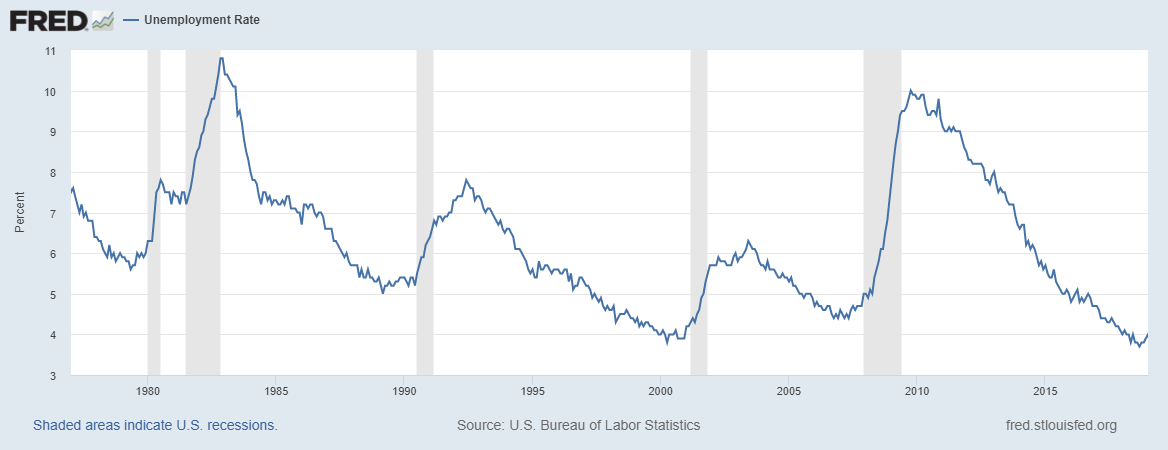
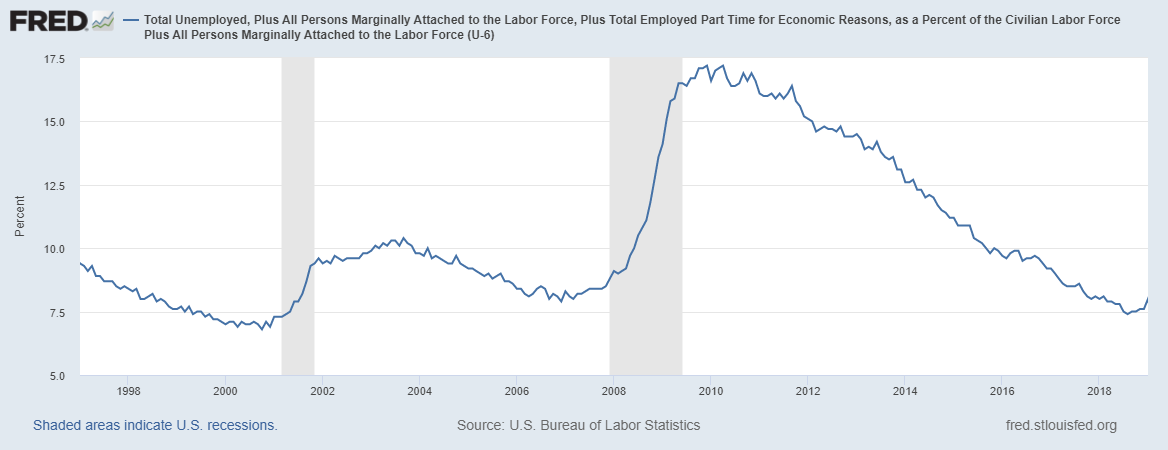
Unemployment is a persistent problem that affects individuals experiencing it as well as society as a whole. It can be viewed as a measure of the economic health of the economy, with the greater unemployment rate suggesting a dire financial situation, such as a recession. The Federal Reserve Economic Data (FRED) graphs indicate that before the Great Recession (2007-2009), the unemployment and total unemployment rates were relatively low at 5% and 8.8% in December 2007, respectively. During the recession, the rates increased sharply to 9.5% and 16.5% in June 2009. After the recession, the rates declined slowly, reaching their lowest point of 3.7% and 7.4% in August 2018.
Educational Attainment
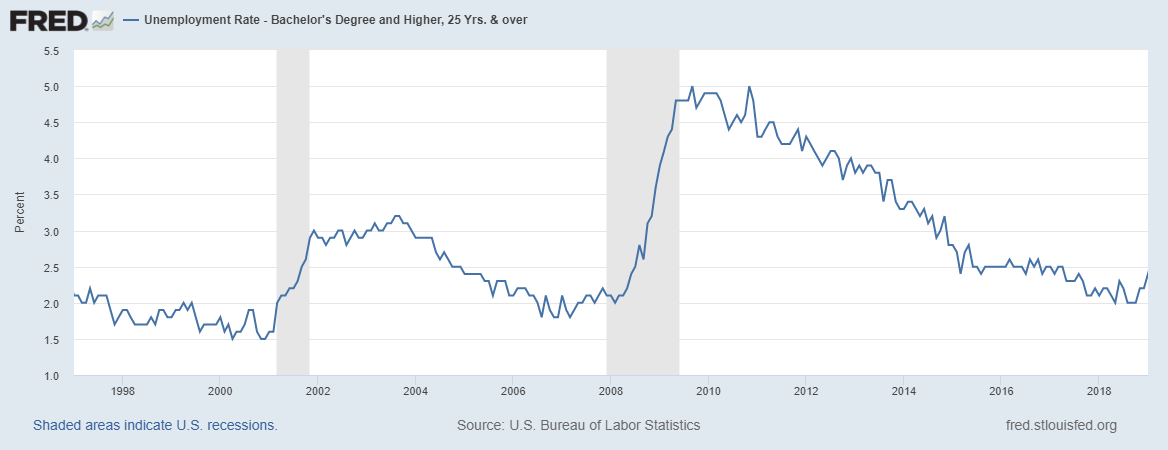
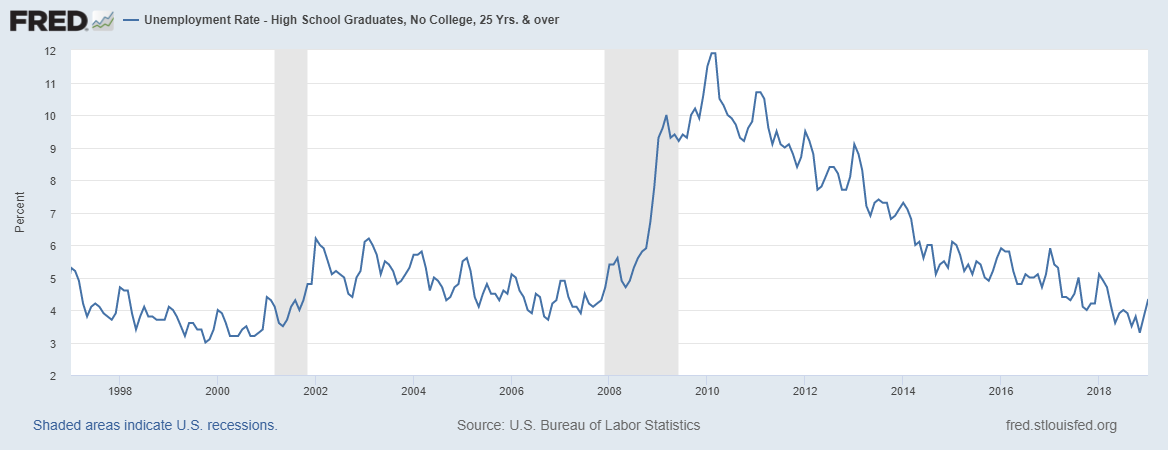
FRED graphs on educational attainment show that high school graduates are more likely to be unemployed than individuals with a bachelor’s degree or higher. Thus, before the recession, the unemployment rate among college graduates was at 2.1%, reaching 4.7% among high school graduates. Meanwhile, during the height of the recession, it reached 4.8% and 10% for persons with college and high school education, respectively. Notably, following the recession, the unemployment rate among people with a college education showed a stable decline. Whereas the rate among high school graduates continued to grow for several months, indicating they had fewer employment opportunities after the recession. Overall, the rates among these groups echo the overall unemployment rate in the United States during the recession.
Gender
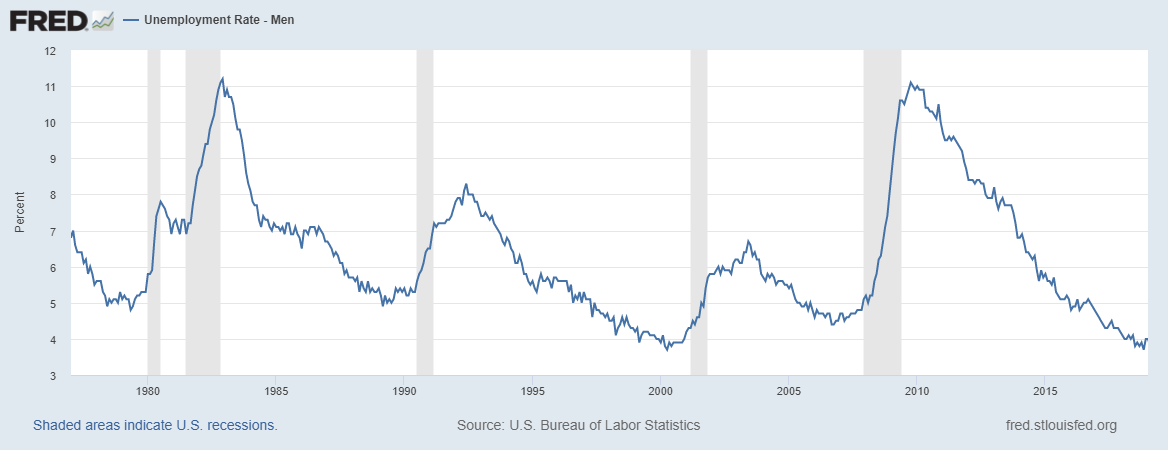
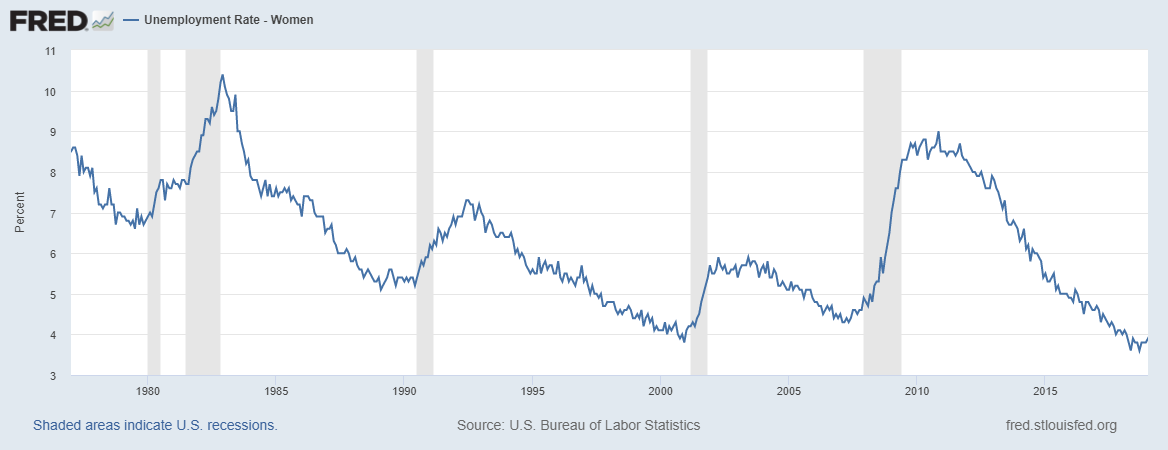
Furthermore, the Great Recession reflected gender disparities in employment. Thus, in November 2007, unemployment rates for men and women were at 4.8% and 4.6%, respectively, showing similar economic success and job attainment. During the recession, the rate rose to 10.6% for men and 8.3% for women, suggesting that men within the labor market were more affected than women. However, following the recession, women were more impacted, with the unemployment rate continuing to grow and peaking at 9% in November of 2010. Although the unemployment rate among men was higher and reached 11.9% in September 2009, it showed a steeper decline following that point. In addition, the sharp increase in unemployment among men reflects the overall dramatic increase in the country.
Race
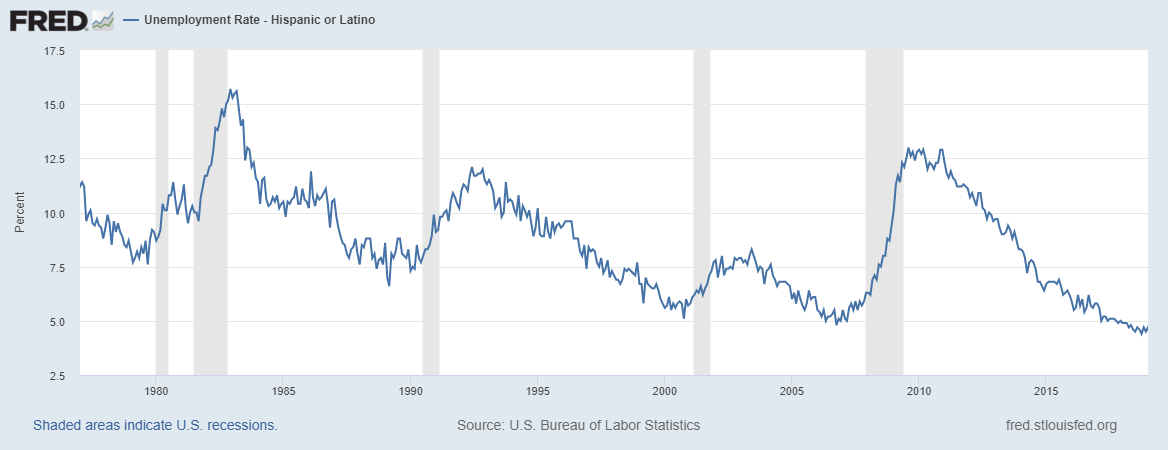
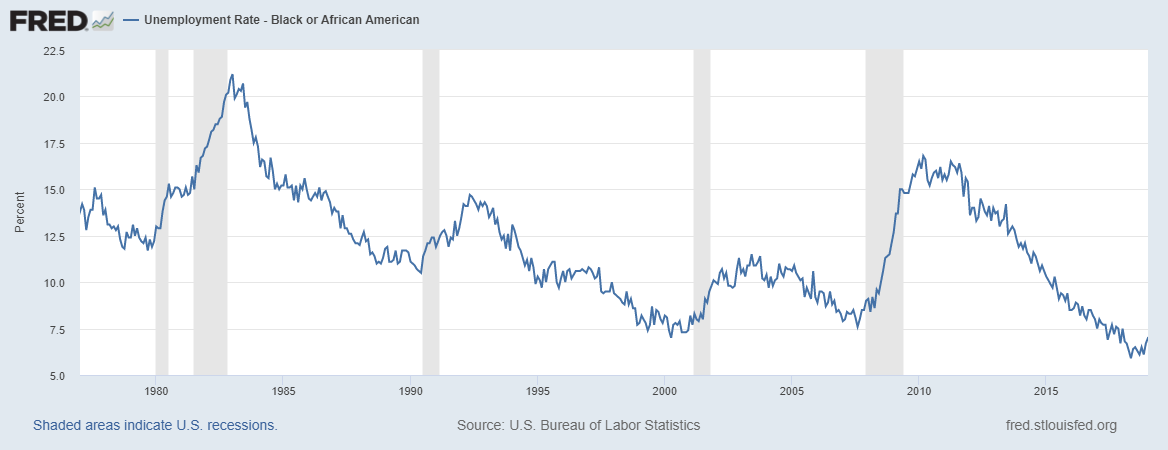
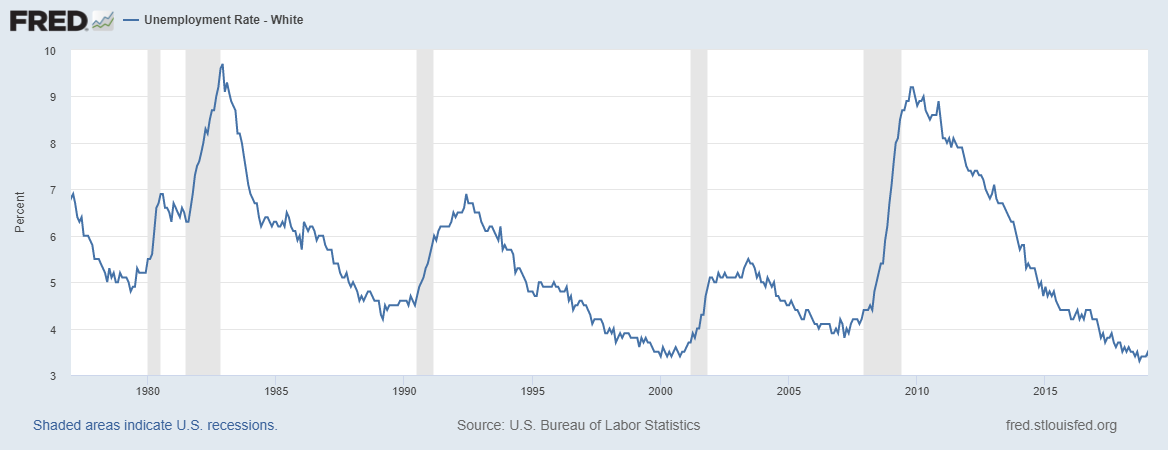
It should be noted that the unemployment rates among white, African American, and Hispanic groups varied significantly before, during, and following the Great Recession. Thus, in December 2007, the rates were at 4.4%, 8%, and 6.3% for white, African American, and Hispanic individuals, respectively. During the recession, they increased to 8.7%, 15%, and 12.1%. After the recession, the unemployment rate in the white group was steep, while for African American and Hispanic groups, it was more gradual. All groups reached lower unemployment rates by September 2018, with 3.3%, 6.1%, and 4.6% in the white, African American, and Hispanic groups. Although these rates are lower than those pre-Recession, the trend of African American and Hispanic individuals experiencing more problems securing employment persists.
Race and ethnic disparities
Several economic factors contribute to the disparities in unemployment rates in different racial and ethnic groups. According to Rodgers (2019), higher rates of incarceration among African Americans and lack of employment opportunities following release contribute to unemployment in the group. In addition, a segregated labor market that forces Hispanics and African Americans into cyclical employment and jobs that do not require qualifications contribute to the high unemployment rates (Weller & Hanks, 2018).
Conclusion
In summary, the Great Recession impacted most individuals in the labor market regardless of their gender, race, ethnicity, and educational attainment. Nevertheless, it should be noted that men were more affected during the recession but regained employment faster than women following it. Similarly, individuals with a bachelor’s degree or higher experienced a lower unemployment rate than high school graduates and reentered the labor force quicker. In addition, African American and Hispanic groups experienced higher unemployment rates than the white majority due to such factors as cyclical employment, segregated labor market, and incarceration rates.
References
Rodgers. (2019). Race in the labor market: The role of equal employment opportunity and other policies.RSF: The Russell Sage Foundation Journal of the Social Sciences, 5(5), 198-220.
Weller, C. E., & Hanks, A. (2018). The widening racial wealth gap in the United States after the Great Recession.Forum for Social Economics, 47(2), 237-252.